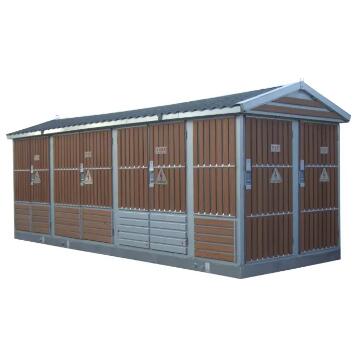Unveiling Versatility: The Modular Marvel of Cabinet Type Substations in Electrical Infrastructure
2024-01-09
Introduction:
In the ever-evolving landscape of electrical distribution systems, adaptability and scalability are non-negotiable virtues. Cabinet Type Substations, with their modular design, emerge as dynamic transformers of power infrastructure, offering unparalleled flexibility for expansion and modification. This blog post delves into the modular nature of Cabinet Type Substations and how it serves as a cornerstone for the seamless evolution of electrical systems.
The Essence of Modularity:
1. Purpose:
The modular nature of Cabinet Type Substations is grounded in the principle of breaking down the system into discrete, self-contained units. Each module serves a specific function, contributing to the overall functionality of the substation.
2. Advantages:
- Scalability: The modularity allows for easy scaling of the substation to meet the growing demands of electrical power, accommodating increased loads and expanding distribution networks.
- Flexibility: Modifications or upgrades can be executed with precision by adding or replacing specific modules, ensuring adaptability to changing requirements.
Modular Components:
1. Transformer Modules:
- Purpose: Transformer modules within Cabinet Type Substations handle the voltage transformation process.
- Advantages: Additional transformer modules can be added to meet increased power demands without the need for extensive system overhauls.
2. Switchgear Modules:
- Purpose: Switchgear modules control the flow of electrical power within the substation.
- Advantages: The modular design allows for the incorporation of additional switchgear units, enhancing the substation's capacity to manage diversified loads.
3. Protection Device Modules:
- Purpose: Protection devices detect faults and isolate affected areas within the substation.
- Advantages: Upgrading or replacing protection device modules ensures that the substation remains equipped with the latest safety features and fault detection capabilities.
4. Control and Monitoring Modules:
- Purpose: Control and monitoring modules provide oversight of the substation's operations.
- Advantages: The modular design allows for the integration of advanced control systems and monitoring technologies, enhancing overall operational efficiency.
Expansion Without Downtime:
1. Purpose:
The modular nature of Cabinet Type Substations enables expansion or modification with minimal disruption to the existing electrical system.
2. Advantages:
- Continuous Operation: Additional modules can be seamlessly integrated into the substation without requiring a complete shutdown, ensuring uninterrupted power distribution during expansion or modification processes.
- Reduced Downtime Costs: The ability to modify or expand incrementally reduces the economic impact of downtime, allowing for strategic upgrades without significant financial repercussions.
Tailoring to Specific Needs:
1. Purpose:
Modular design empowers system engineers to customize Cabinet Type Substations based on specific operational needs and site constraints.
2. Advantages:
- Site-Specific Adaptations: Components can be arranged or replaced to accommodate site-specific requirements, optimizing space utilization and addressing environmental considerations.
- Technology Upgrades: The modularity allows for the integration of cutting-edge technologies without the need for an entire system overhaul, ensuring that the substation stays at the forefront of innovation.
Future-Proofing Electrical Infrastructure:
1. Purpose:
The modular nature of Cabinet Type Substations acts as a forward-thinking strategy, future-proofing the electrical infrastructure against evolving technological and operational demands.
2. Advantages:
- Adaptable to Technological Advances: As new technologies emerge, the modular design enables seamless integration, keeping the substation aligned with the latest advancements in power distribution.
- Long-Term Investment: The ability to incrementally upgrade or expand the substation safeguards it against obsolescence, maximizing the return on investment over the long term.
Conclusion:
Cabinet Type Substations, with their modular design, epitomize the adaptability and versatility demanded by the dynamic landscape of modern electrical distribution. By facilitating easy expansion, modification, and customization, these substations emerge as champions of innovation, ensuring that power infrastructure remains resilient, scalable, and ready for the challenges of the future. As the world of electrical systems continues to evolve, the modular marvel of Cabinet Type Substations stands as a testament to the transformative power of flexibility in engineering.



